Yuguang Chen
Hunyuan3D Studio: End-to-End AI Pipeline for Game-Ready 3D Asset Generation
Sep 16, 2025



Abstract:The creation of high-quality 3D assets, a cornerstone of modern game development, has long been characterized by labor-intensive and specialized workflows. This paper presents Hunyuan3D Studio, an end-to-end AI-powered content creation platform designed to revolutionize the game production pipeline by automating and streamlining the generation of game-ready 3D assets. At its core, Hunyuan3D Studio integrates a suite of advanced neural modules (such as Part-level 3D Generation, Polygon Generation, Semantic UV, etc.) into a cohesive and user-friendly system. This unified framework allows for the rapid transformation of a single concept image or textual description into a fully-realized, production-quality 3D model complete with optimized geometry and high-fidelity PBR textures. We demonstrate that assets generated by Hunyuan3D Studio are not only visually compelling but also adhere to the stringent technical requirements of contemporary game engines, significantly reducing iteration time and lowering the barrier to entry for 3D content creation. By providing a seamless bridge from creative intent to technical asset, Hunyuan3D Studio represents a significant leap forward for AI-assisted workflows in game development and interactive media.
Improving Event Causality Identification via Self-Supervised Representation Learning on External Causal Statement
Jun 03, 2021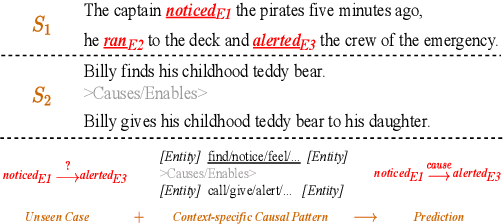

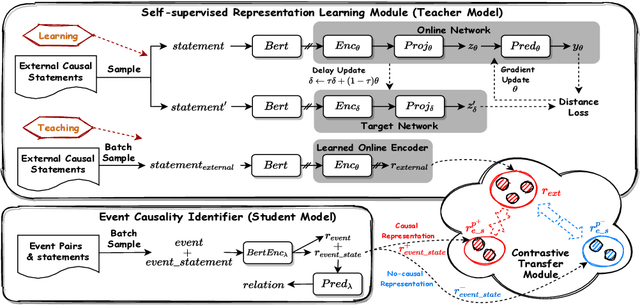
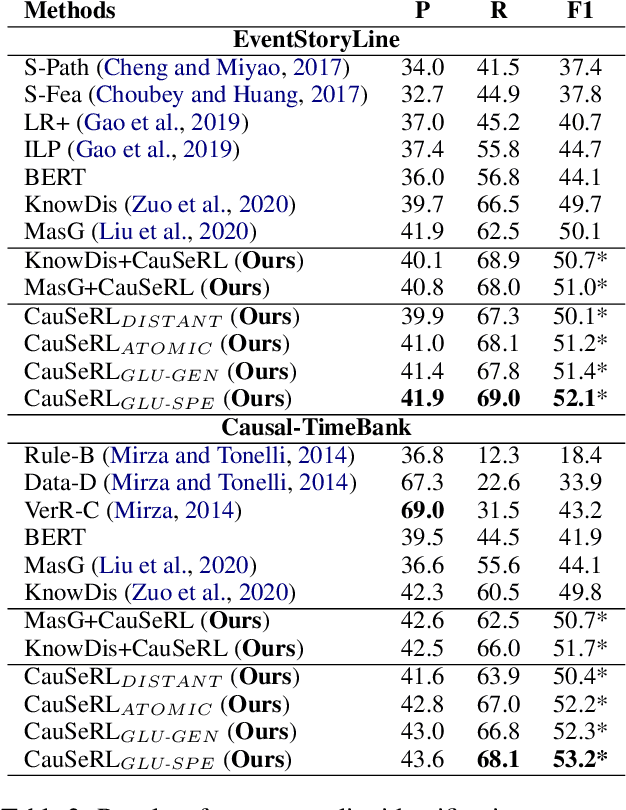
Abstract:Current models for event causality identification (ECI) mainly adopt a supervised framework, which heavily rely on labeled data for training. Unfortunately, the scale of current annotated datasets is relatively limited, which cannot provide sufficient support for models to capture useful indicators from causal statements, especially for handing those new, unseen cases. To alleviate this problem, we propose a novel approach, shortly named CauSeRL, which leverages external causal statements for event causality identification. First of all, we design a self-supervised framework to learn context-specific causal patterns from external causal statements. Then, we adopt a contrastive transfer strategy to incorporate the learned context-specific causal patterns into the target ECI model. Experimental results show that our method significantly outperforms previous methods on EventStoryLine and Causal-TimeBank (+2.0 and +3.4 points on F1 value respectively).
LearnDA: Learnable Knowledge-Guided Data Augmentation for Event Causality Identification
Jun 03, 2021
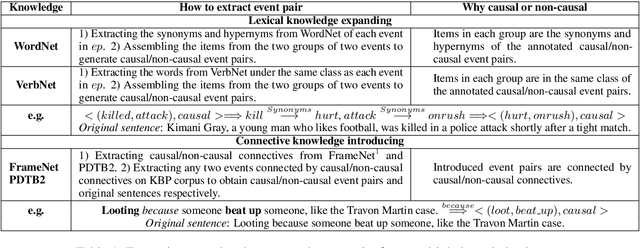
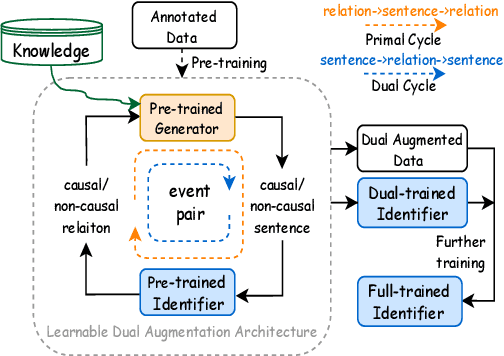
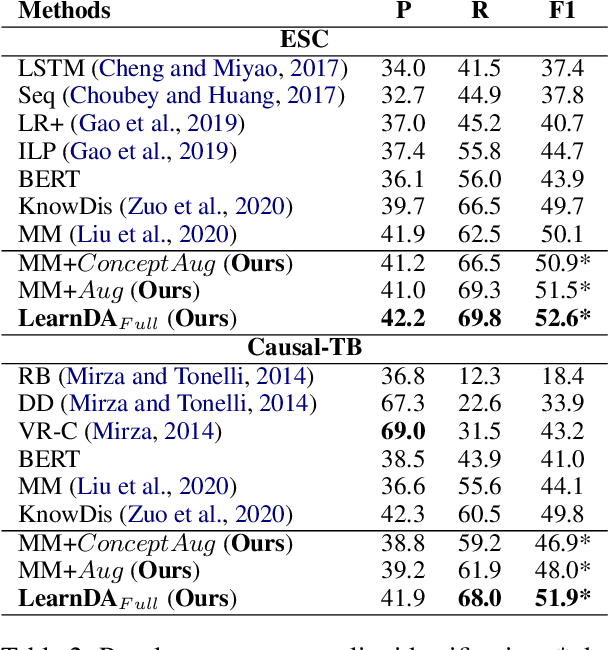
Abstract:Modern models for event causality identification (ECI) are mainly based on supervised learning, which are prone to the data lacking problem. Unfortunately, the existing NLP-related augmentation methods cannot directly produce the available data required for this task. To solve the data lacking problem, we introduce a new approach to augment training data for event causality identification, by iteratively generating new examples and classifying event causality in a dual learning framework. On the one hand, our approach is knowledge-guided, which can leverage existing knowledge bases to generate well-formed new sentences. On the other hand, our approach employs a dual mechanism, which is a learnable augmentation framework and can interactively adjust the generation process to generate task-related sentences. Experimental results on two benchmarks EventStoryLine and Causal-TimeBank show that 1) our method can augment suitable task-related training data for ECI; 2) our method outperforms previous methods on EventStoryLine and Causal-TimeBank (+2.5 and +2.1 points on F1 value respectively).
 Add to Chrome
Add to Chrome Add to Firefox
Add to Firefox Add to Edge
Add to Edge